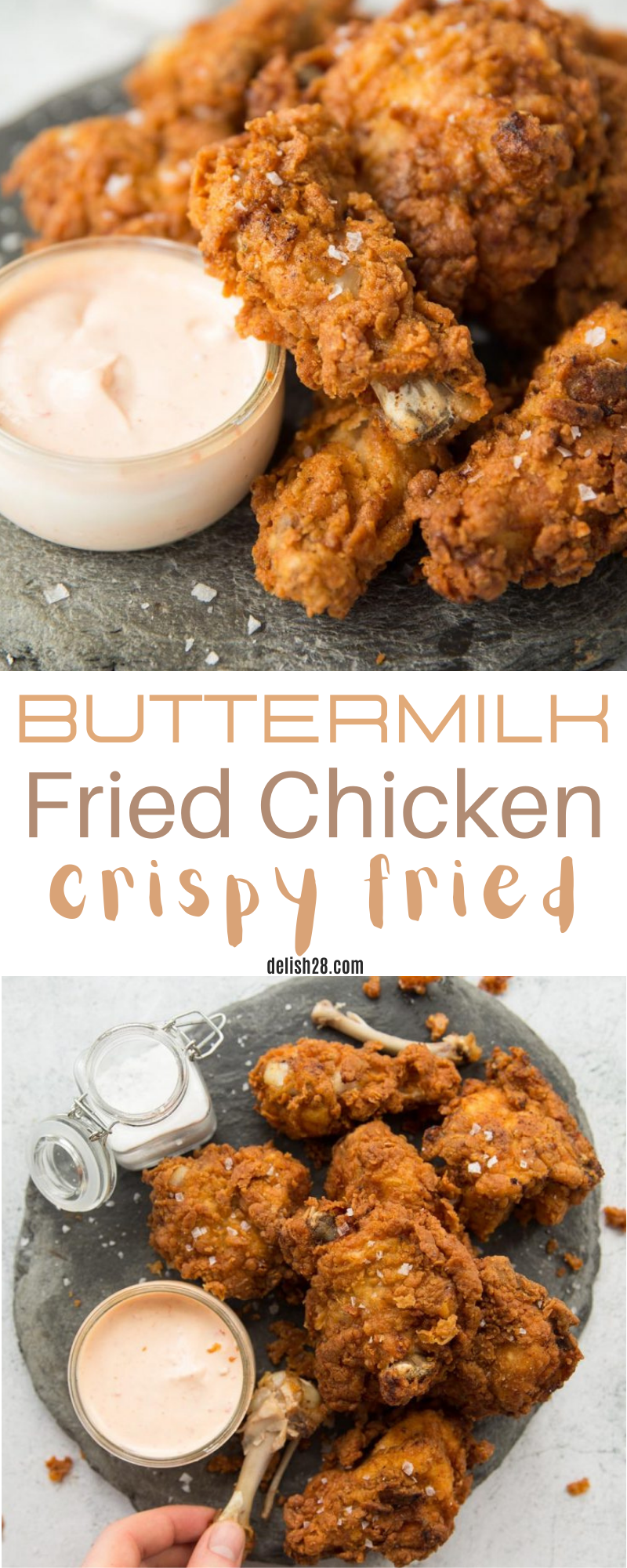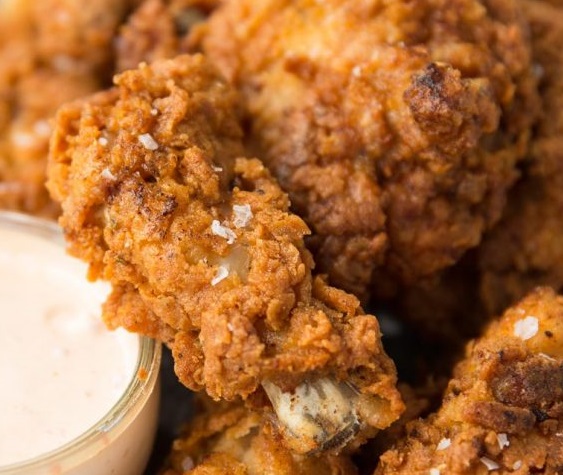This Buttermilk Fried Chicken formula is loaded with all the tips you require to make EXTRA fresh seared chicken. When you give this a go, you will not have it some other way!
Oh rapture, is this post bound to happen. I’ve been trying out this singed chicken formula for a loooooong time, and I’m too eager to at long last impart to you the attempted, tried and consummated formula!

I trust we’re all in understanding that the best seared chicken is mouthwateringly delicate within, tooth shatteringly fresh and flakey outwardly and overflowing with flavor all finished. This formula will give you precisely that. I’ve loaded this post with all you require to know in getting wonderful singed chicken, so we should begin directly toward the start.
Ingredients (check list):
- 3.3lb / 1.5kg Whole Chicken, divided (or individual bone in skin on pieces – see notes)
- 3-4 cups / 750ml – 1litre Vegetable Oil, or as needed for deep frying (see notes)
- Wet Mix
- 2 cups / 500ml Buttermilk
- 1 tsp EACH: Paprika, Cayenne Pepper, White Pepper, Onion Powder, Garlic Powder, Salt
- Dry Mix
- 2.5 cups / 375g Plain/All Purpose Flour
- 1 tbsp Paprika
- 2 tsp EACH: Oregano, Baking Powder
- 1.5 tsp Salt, plus extra to sprinkle at the end
- 1 tsp EACH: Onion Powder, Garlic Powder, Cayenne Pepper
- 1/2 tsp Black Pepper
Instructions:
- In a bowl, combine the wet mix with your chicken, ensuring it’s fully coated by the marinade. Cover and allow to marinate in the fridge for an absolute minimum of 4 hours, but the longer the better (up to 24hours). Remove at least 30mins before you intend to use it to bring to room temp (important – frying cold chicken causes it to seize up and go chewy).
- Meanwhile, combine all of your dry mix. I find this easiest in a small tray, but you can also use a shallow bowl. Dip a piece of your chicken into the mix and fully coat. Really make sure you get the mix in every part of the chicken, this will give you those ‘flaky’ parts which make the chicken extra crispy. Place on a tray and repeat with the remaining chicken.
- Heat up enough oil to comfortably cover the depth of your largest piece of chicken. Drop a piece of mixture in, if it slowly sizzles to the top you’re good to go. You want the oil to be approx 175C/350F – 180C/356F. The temp will drop when the chicken hits the oil, and that’s okay, just try to maintain a heat of around 320F/160C. A medium heat should obtain this.
- In batches of 3 (4 max) gently place your chicken in the oil. Deep fry for 6-8mins on each side or until deep golden and white through the centre (see notes). If you’re not confident deep frying just test with one piece first.
- Place each piece on a wire rack with paper towels underneath when finished and sprinkle with salt to draw out the last bit of moisture. The chicken should be piping hot with the juices running clear. In all circumstances the chicken internal temp 165F/75C (take into consideration it continues cooking slightly once out the oil).
Notes:
- What cut of chicken to use? – I always use a whole chicken as I like the variety. If you do this I recommend cutting the breast in two so everything is evenly sized. I also cut the wings in half and deep fry them separately (as they cook quicker). If you don’t want to use a whole chicken, just use 10 pieces of your favourite cuts i.e thighs/drumsticks/wings and make sure you use skin on bone in.
- What oil to use for deep frying? – You want to use an oil with a high smoking point and a neutral flavour. For this reason I use either vegetable or sunflower oil. Olive oil is NOT suitable for deep frying.
- How long to deep fry for? – it depends on the size of cut, but anywhere between 10-15mins. When you drop the chicken in the oil the temp will drop from 350F/175C to about 320F/160C, so keep it at that temp. The chicken is done when the batter is golden and the inside is white with the juices running clear. The chicken will actually carry on cooking once it’s taken out the oil due to carry over heat. Just make sure it’s piping hot when it’s stabbed. Also, try to cook similar sized pieces in the same batches so they all cook at the same rate.
- Calories – this is really difficult to calculate as it’s difficult to tell how much oil and buttermilk is soaked up AND to know which cuts of chicken you’ll use. This calculation is based on using chicken thighs only, on the assumption that 1/2 a cup of buttermilk sticks, 1 cup of flour sticks, 1 tsp of salt is absorbed and 2 tsp of oil per thigh is soaked up. Calories per thigh. Just take this calculation with a pinch of salt. Pun intended.



